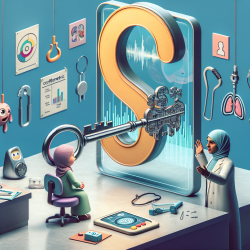Introduction
As speech-language pathologists, we are always on the lookout for innovative ways to improve our practice and create better outcomes for our clients. A recent study, "Correlation between the cephalometric measurements and acoustic properties of /s/ sound in Turkish," offers valuable insights into how the physical structure of the mouth can affect speech sounds. This blog post will explore the study's findings and discuss how you can apply them in your practice.
Understanding the Study
The study aimed to evaluate the acoustic properties of the /s/ sound in individuals with different occlusion types and to investigate the relationships between these properties and cephalometric measurements. The research involved 60 patients divided into three groups based on their malocclusion types: Class I, Class II, and Class III.
The researchers found that the center of gravity of the /s/ sound had the lowest value in the Class II group. In the Class III group, moderate positive correlations were observed between the center of gravity and specific cephalometric measurements, such as the Sella-Nasion to Gonion-Gnathion angle and the Lower incisor to Nasion-B point.
Practical Applications for Speech-Language Pathologists
Understanding the correlation between cephalometric measurements and the acoustic properties of speech sounds can significantly enhance your practice. Here are some ways to apply these findings:
- Early Identification: Recognize the potential impact of malocclusion on speech sounds and consider referring patients for orthodontic evaluation early, especially those with Class III malocclusion.
- Collaborative Approach: Work closely with orthodontists to address structural issues that may affect speech production, ensuring a comprehensive treatment plan for your clients.
- Customized Therapy: Use cephalometric data to tailor your therapy sessions, focusing on specific articulation challenges related to malocclusion.
Encouraging Further Research
This study opens the door for further research into the relationship between dental structures and speech sounds. As practitioners, we can contribute to this growing body of knowledge by:
- Conducting Case Studies: Document and share your findings on how orthodontic interventions impact speech therapy outcomes.
- Participating in Research: Collaborate with universities and research institutions to explore new areas of study.
- Staying Informed: Keep up-to-date with the latest research and incorporate new findings into your practice.
Conclusion
The study highlights the importance of considering structural factors when addressing speech disorders. By integrating these insights into your practice, you can improve your clients' speech outcomes and contribute to the advancement of speech-language pathology.
To read the original research paper, please follow this link: Correlation between the cephalometric measurements and acoustic properties of /s/ sound in Turkish.










